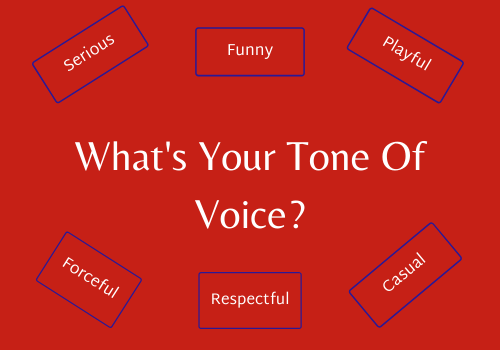How To Grow Your Content Marketing on Social Media?
More than a million people around the world join social media, every single day. How can you make the most of social media in your content marketing? Select the right social media platforms, promote your content through advertising and offer unique social content.
Let’s start content marketing on social media now.
Finding the Right Audience

Today, people are using social media, that’s a big opportunity for you to connect the right people with your content marketing program. So let’s review what people use some of the major social networks. We’ll start with Facebook, which also owns Instagram. The big advantages of these two networks are scale, and mobile. A billion people use Instagram each month. Most of them reside outside the US and are under the age of 35. Meanwhile, Facebook has over 2 billion monthly active users, and about half of them are mobile only users. If you’re looking to reach people while they’re browsing for leisure and entertainment, then these are the two platforms to start with. Consumer brands are seeing great success in these platforms.
Let’s move on to the video hosting site YouTube. The Google owns YouTube. It’s a powerhouse search engine in its own right. YouTube has a large global audience. More than 80% of visitors to YouTube live outside the United States. Another notable characteristic about YouTube is the audience skews male 62% of visitors to YouTube are men. A wide variety of content performs well on YouTube. From blogs to how to videos to product reviews to comedy sketches.
Pinterest is essentially a visual search engine. Members frequently use the site to find products ideas and inspiration. And the audience is 80% female content around travel fashion, home decor and recipes has flourished on Pinterest.
Now let’s turn to two social networks that work well in B2B marketing, LinkedIn and Twitter. More than 500 million professionals use LinkedIn and nearly half of them are in upper management. That’s why you’ll find companies like Adobe, and Marketo are active on LinkedIn.
The micro blogging network Twitter isn’t specifically for business contexts, but it has high adoption in areas like tech, media, sports and politics. CNN National Geographic, and even the NFL are some of the most followed Twitter accounts out there. More than 80% of Twitter’s users live outside the United States, and 69% of them are male.
It’s not hard to see that different social networks attract and engage different people.The key is to verify that the social networks you use in your content marketing, have the people you want to reach. Check with the social networks themselves, as well as the handy research offered by Hootsuite.
So before you invest in using social networks for your content marketing, research, which social networks have the right people. Your effort will pay off with an engaged community, ready to embrace your content.
Finding The Right Content Types

If you think your content marketing can win on social media by sharing links to your blog posts, it’s time to think again. You’ll need to consider what content formats work well on the social networks you choose to engage.
So, to help you plan, let’s walk through three key formats and where they work best.
1.Photos
are a great starting point to expand your social media repertoire. For starters, you could share behind the scenes snapshots, images of your product in action, or create little graphics featuring interesting facts or quotes. A stylist or fitness coach could share before and after photos of customers, while a restaurant might feature images of ingredients from paddock to plate.
2.Video
is another format that perfo4rms well on social media. Not just on YouTube, but also on Facebook, Instagram, and increasingly, LinkedIn. Since mobile content is typically viewed in portrait mode, and often without sound, consider filming vertically and adding text overlays and animation. Live and 360 degree videos offer immersive opportunities like never before.
Nike is a good example of a brand that’s constantly innovating in the visual content space.
3. Interactive content
Think polls, questions, and prompts, and of course, competitions. Giveaways are always popular. Polls are supported on Facebook, Instagram, and Twitter. Plus, third-party tools enable you to build quizzes, games, forms, and other types of interactive content that you can then post on your social channels.Once you get your head around what’s on offer, have a play around and see what fresh ideas you come up with to shake up your social media marketing.
Finding The Right Features

Social networks borrow successful features like disappearing stories from one another. Get to know these key features so your content marketing can succeed.
1. Algorithms
Perhaps the defining feature of today’s social media platforms from Facebook to LinkedIn and Twitter. Rather than displaying content in order of how recently it was posted, news feeds prioritize content based on factors such as how much engagement a post has had, and the credibility of the profile posting it. So think quality and relevance over quantity. Tapping in to pop culture and current events is a great way to drive engagement. As an example, HubSpot released a video about Marvel’s marketing strategy to coincide with the release of “The Avengers: Infinity War.” A clear strategy and consistency is key to success here. Smart use of hashtags can also help users discover your content, even if they don’t follow you. So now
2. Streaming.
More than one in five Facebook videos are live, and this format is given strong weighting by the algorithm.
Live streams offer unique real-time bridge between broadcaster and audience, and this can often be a two-way interaction. Speaking straight to the camera, or streaming keynotes from events and conferences is an easy way to get started. You can also try using this medium for conducting Q and As, interviews, walk throughs, and delivering behind the scenes content.
3. Community and Conversation.
Facebook Groups offer an opportunity to cultivate niche communities around common interests. Meanwhile, Private Messaging is on the rise. Think about Facebook Messenger, WhatsApp, or Direct Messages on Twitter and Instagram. This has led to rapid growth in automated messaging and chat bots. So social networks offer features that give people personalized and connected experiences.
Finding the Right Advertising

If you’re serious about content marketing on social media then you need to get serious about advertising. It’s how all the major social networks make money. So they’re designed to give your content maximum results when you advertise.
1. Demographic profile.
Location, age, and gender are common filtering categories you can narrow down your advertising audience on each platform. And on LinkedIn you can done in on users who work in specific industries, companies, or job functions.
For example, a brick and mortar business might only want to reach locals so you could limit your targeting to your city or region.
Facebook has very advanced demographic targeting capabilities including household makeup, income level, relationship status, and others. Let’s say your ideal customers are new parents with young babies. On Facebook you could create a campaign to only target people with children under the age of one.
2. Interest-Based Targeting
Offers a wealth of options and you can layer them to create custom combinations by including or excluding further criteria. For instance, financial brands could target people interested in personal finance, investing, and budgeting. And a pet retailer could target people interested in dogs or cats and even refine this more by specific breed. The possibilities are nearly endless.
3. Custom Audiences
Are a powerful tool offered by Facebook, LinkedIn, Twitter, Pinterest, and Instagram. These are generated from data about your existing customers so that you can reconnect with them online. This is also known as remarketing. You can build these by uploading data from your CRM system, email lists, or contact lists. These are then matched against the email addresses or phone numbers associated with individual user accounts on social media.
4. Lookalike Audiences
Also known as act alike audiences on Pinterest to find new people who are similar to your current audiences.
Your content marketing will not succeed on social media by posting great content alone. You will have to advertise. The great news is social networks offer powerful advertising tools that will get your content in front of the right people.
Planning A Cadence Of Content Updates

How often should I post on social media? It’s one of the top questions I get about social media and the short answer is it depends. But as you expand your content marketing to social networks, you need to get specific about how often you post where.
So to help you start, I’m sharing a few tips on finding your own rhythm on social media.
1. The first tip is different social networks lend themselves to different cadences. For example,
a. Twitter’s stream is famously fast moving. So multiple posts a day are common. You can even repeat tweets, although it’s best to mix up your accompanying copy.
b. The pace of other social media channels is slower. Once a day would be plenty on Facebook and LinkedIn.
c.One to two daily posts typically work best on Instagram.
2.Create a social media calendar that is aligned with your content marketing calendar. For instance, if your content marketing program publishes an article every week, you could plan to post teasers on social media every week. I like to program social media with a mix of promoting new content and curating existing and relevant content. I also like to regularly include content created only for social media. For example, Oreo posts witticisms on Twitter that you’ll never see on their website.
3. Tools to help manage your cadence of posting on social networks. A range of calendar tools and scheduling tools are affordable and available. For a calendar you can always use a spreadsheet. You can find the template attached. Or you can use tools like Trello, Buffer, or CoSchedule. And tools like Hootsuite allow you to schedule lots of social posts in advance, so you have a steady stream of content going to your social networks.
When you post content consistently on social media, you’ll engage and grow your audience.
Creating Unique Content For Social Media

Let’s review three specific social media formats, and how to create unique content for each.
1. Instagram Stories
The thing to note about this feature is that content posted to an Instagram Story automatically vanishes after 24 hours. That’s a pretty short shelf life, but you can have a lot of fun with this feature. You can snap photos and videos in the moment, or upload anything snapped on your camera roll within the past day. Then you can overlay elements like text, stickers, emojis, polls, and GIFs. Stories tend not to be super polished, so don’t worry about perfection.
2. A slew of video
Unboxing videos can rack up millions of views. They originated in the tech and fashion niches, giving consumers a preview of what they could expect if they bought those products. For example, you can find videos of people unboxing different pairs of sneakers, or even kids unboxing Lego sets. YouTube challenges also attract a lot of attention. You’ll find videos of vloggers eating hot peppers, guessing Disney songs, and competing at speed drawing.
3. LinkedIn Article
Today, anyone can write and post an article on LinkedIn. Think of it like a blog post, but posted on LinkedIn where your professional contacts can easily discover, read and comment on it. It’s best to keep articles focused on careers and personal development.
So, to more deeply engage your customers on social media, find ways to create unique content. Each network supports formats and offers features that give you exciting possibilities.
Setting The Right Tone For Engagement

1. A Positive Personable Tone.
Social media is conversational and casual, so match this in your content. Remember, users are generally looking to be entertained while killing time or taking a break, so keep things short and snappy.
2. Humor
It’s easier for some brands to take a lighthearted approach than others, of course, but try experimenting a little and see how far you get.
3. Style Guide
Your organization’s voice will remain consistent, but your tone can be adapted depending on the situation. For example, customer service queries always call for a serious, sincere response, even if your brand voice falls more toward the jokey end of the spectrum. So, social media is more of a conversation than a broadcast.
People love to engage on social media and you can encourage them to engage with you by setting the right tone and managing it well.
Encouraging User Generated Content

On social networks, your customers are more than your audience. They are content creators. When you encourage them to create content, you add a whole new dimension to your content marketing.
The most obvious benefit of user-generated content is that it reduces the burden of content creation. You gain ready-made content while engaging with your audience at the same time.
Another great thing about audiences contributing content on social media is that it builds a stronger connection. When you leverage their posts, you’re making them feel seen and validated. It’s a good practice to ask before resharing their stuff, but in most cases, people appreciate the recognition.
Finally, consumers trust recommendations and content from their peers more than they trust brands. So user-generated content adds credibility and authenticity to your content marketing.
Tips for Mojor Social Media
1. Content marketing on YouTube
a. create effective teasers. The YouTube interface is basically a list of teasers with an image and title that represent each video. Make your teasers awesome so that viewers will be more likely to select your video to watch next.
b. Use Of Playlists As you build your catalog of video content, you want to use playlists to organize your content and playlists also can benefit your SEO. YouTube ranks your videos based on the amount of time that watchers spend with your videos. When users view your entire video till the end, or continue to watch your channel beyond one video, YouTube judges your channel to be more popular than competing channels.
c. Put actionable end screens These screens are important for not only engaging your viewers, but also for boosting the SEO value of your videos. YouTube allows you to add an end screen up to 20 seconds long. End screens allow you to create links that can send viewers to your website, to a subscribe now button, to another channel, or to another relevant video that you have created.
2. Content marketing on LinkedIn
a. Make your post headline concise Make your headline include keywords, an emotional angle and a promise of some benefit that the reader will gain from your post. Use attractive and unusual images in your post that will not bore your viewers. Publish twice a week, and only on weekdays during business hours.
b.Use Native Video. LinkedIn savers rate a video post over shared links to external videos. So uploading video directly to LinkedIn is the way to go. Here are a few ideas to get you started. Use hashtags in your video descriptions. LinkedIn automatically suggests hashtags when you post an update, but you can add your own, as well. Use an attractive thumbnail image, to help your video stand out in your viewer’s news feed. If you don’t add a thumbnail, LinkedIn will use the first image from the start of your video. Add a very short text to your thumbnail image to help people understand what it’s about. Once you’ve uploaded your video, make sure to share it on your company and personal LinkedIn accounts so your co-workers and larger network see it. So there’s no way around it. Your LinkedIn posts face a lot of competition. So make your post easy to discover. Copy what successful LinkedIn posts do, and try out Native Video. The right people will be more likely to find your content, and you will be more likely to see great results.
3. Content marketing on regional social networks
Business today is global, that means your content marketing is too, so as you expand your content marketing to social media you’ll need to adjust your approach for different regions. In some areas, the major social networks like Facebook are banned, and regional competitors arose in their place. As you plan your social media efforts, take the time to research each region and don’t miss the great resources offered by HootSuite. So don’t assume all regions use social media the same way, check which networks people in the region actually use. The better you adapt your content marketing for social media in different regions, the more impact your content marketing will have around the world.
Evaluating Impact
1.Tracking reach to the right audience
Reach tells you how many people are viewing or interacting with your content. And many social networks can tell you a lot about who those people are. That means you gain insight into whether your content is reaching the right people.
Total mentions Is the number of replies, retweets and other mentions. Retweet reach is the number of Twitter users who may have seen your posts because other users retweeted them. LinkedIn shows more detailed metrics. You can see the number of views for each one of your posts on LinkedIn. The number of views of your linked post is the total audience. The number of likes, comments or shares is usually a smaller number than the total number of views. Now,
YouTube gives the number of views which is simply the number of people that have seen your video. YouTube also shares the number of dislikes, likes and shares, which is usually smaller than the total number of views.
So to understand the effectiveness of your content marketing on social media, you need to know how many people you reached and whether they’re the right people. Take advantage of the data available in social networks and take your content marketing to the next level.
2.Tracking social media engagement
Referrals tell you how social media channels lead people to your business website. So this metric helps you understand how effective promoting your content on social media is. You can use Google Analytics to track referrals from social media.
Now let’s turn to some other social media metrics that help you understand engagement. These include likes, shares, and comments. Because social networks are all about engagement, ideally you want these numbers to be high. Note whether certain kinds of content trigger more engagement than others. For example, if you see that social users engage more with videos than with text, you might decide to post videos more often. And finally, you might have a specific sign of engagement you want to track, such as using interactive content or gaining sales leads.
3. Tracking social media sentiment
Social media sentiment is an emotion, attitude, or opinion about your business and your social presence. Typically, that sentiment is positive, negative, or neutral. Most businesses want to amplify positive sentiment and diffuse negative sentiment. Social media listening tools such as Hootsuite and Brandwatch conduct sentiment analysis. That means they analyze mentions and conversations about your company. This analysis helps in three ways.
a. Filter New Mentions Your brand by sentiment so you can quickly identify positive or negative mentions and respond. If someone really loves or really hates your content, you can take action.
b.Track Customer Sentiment over time, such as weeks or months. This feature allows you to see if customer attitudes towards your brand are improving or getting worse as you expand your content marketing.



Write a Comment